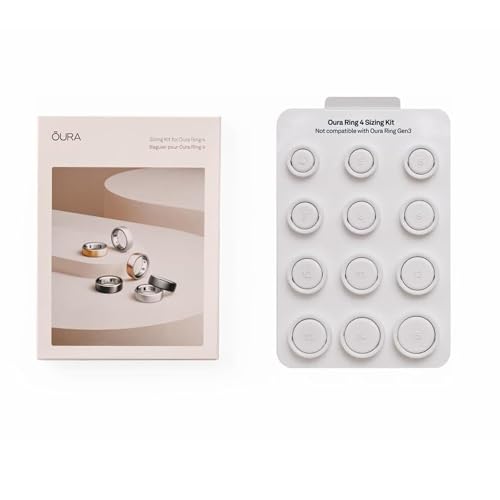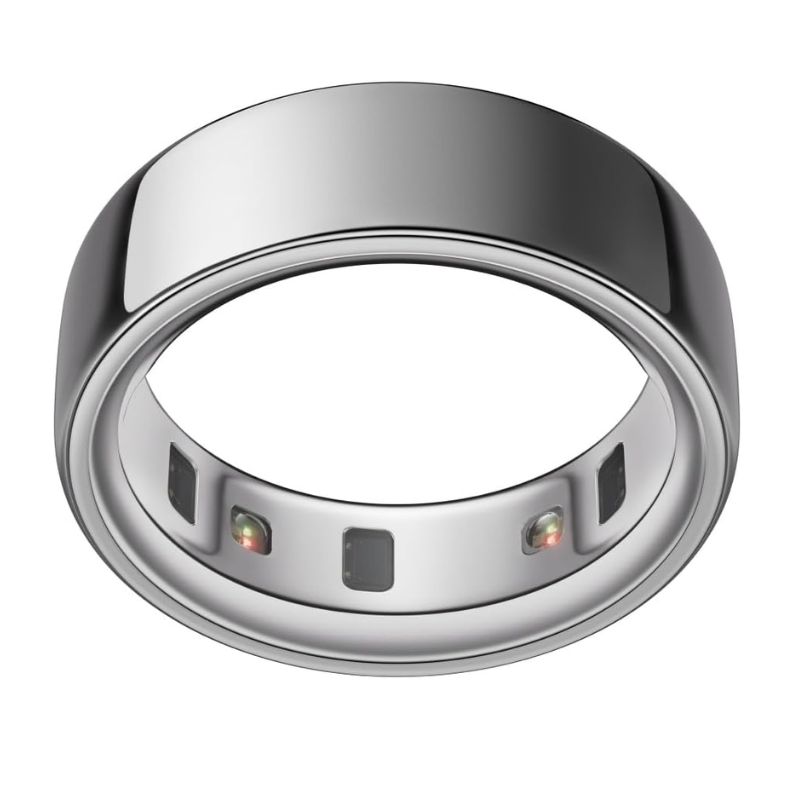I've worn the Oura Ring 4 for almost 5 months - here's what I really think about the premium fitness tracker
With new ceramic designs and colours to choose from, there's never been a better time to invest in the Oura Ring 4 - but is it worth it?
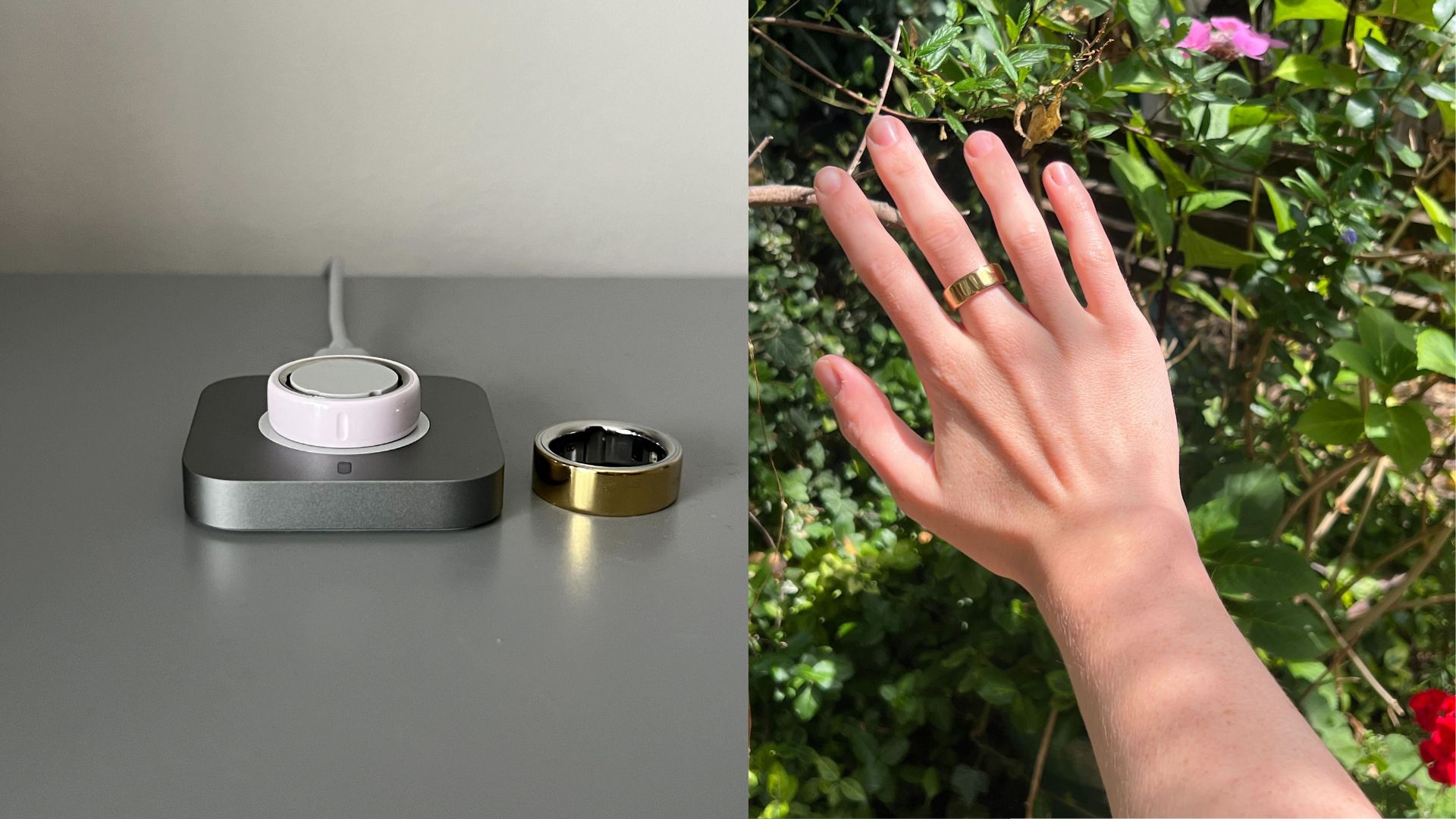
The Oura Ring 4 is the most discreet tracker on the market. Major upgrades like the Smart Sensing Platform, updated app, and ceramic designs, make it comfortable to wear and easy to delve into your health productively. It's on the pricier side, but the Oura Ring 4 is a worthwhile investment for those looking to improve their health from all four pillars.
-
+
Very stylish and discreet design
-
+
Comfortable to wear 24/7
-
+
Accurate and detailed sleep data
-
+
Extensive stress tracking
-
+
Insights into long-term health
-
+
Easy to charge
-
+
Temperature sensor for cycle tracking and illness prediction
-
-
Must pay £5.99 subscription fee
-
-
Running and other exercise data aren't always accurate
Why you can trust Woman & Home

These days, you won't find me without my Oura Ring 4. Ask my friends and family, who've gone from wondering where my new ring has come from to repeatedly asking me if I thought the tracker was still worth buying and what model they should get.
I've been wearing the Oura Ring 4 for the last five months after upgrading from the Oura Ring Gen 3. It's certainly one of my best fitness trackers. But more so, it's the best sleep and recovery tracker I've ever had - and as woman&home's digital health editor, I've tried many of these. With superior insights into how our bodies react to daily stresses, exercise, sleep, and hundreds of other triggers, it's a personal wellness coach on your finger.
Insights aside, what makes the Oura Ring so special is its design. Whether you opt for the classic metallic or the new ceramic models (I've tried both), you'll barely remember your ring is there as it fits so seamlessly.
But naturally, all of these benefits come with a price tag, which starts at £349. Is it worth the investment? Let's find out.
Oura Ring 4 review
Oura Ring 4: Specifications
- Width: 7.90 mm
- Thickness: 2.88 mm
- Weight: 3.3g - 5.2g
- Size range: 4 - 15
- Colours: 6
- Battery life: 8 days
- Waterproof? No, water resistant up to 100m
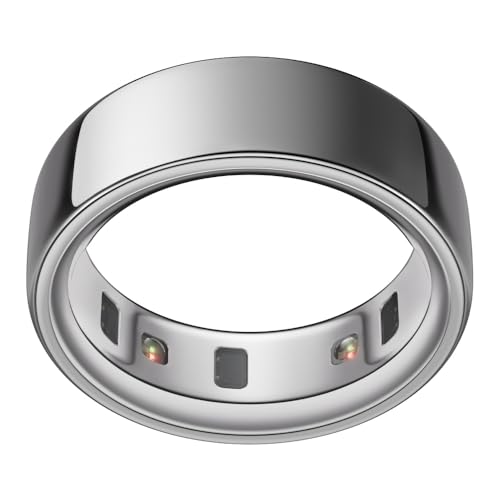
The Oura Ring 4 comes in six colours: gold (like I tested), silver (as pictured), black, brushed silver, rose gold, and stealth. The price depends on the colour. You can go straight to buying the ring if you know your size (but beware, it differs from the Oura Ring 3), and if not, be sure to use the sizing kit first.
The Oura Ring 4 can also be purchased directly from the website and via other retailers, including Healf and Currys.
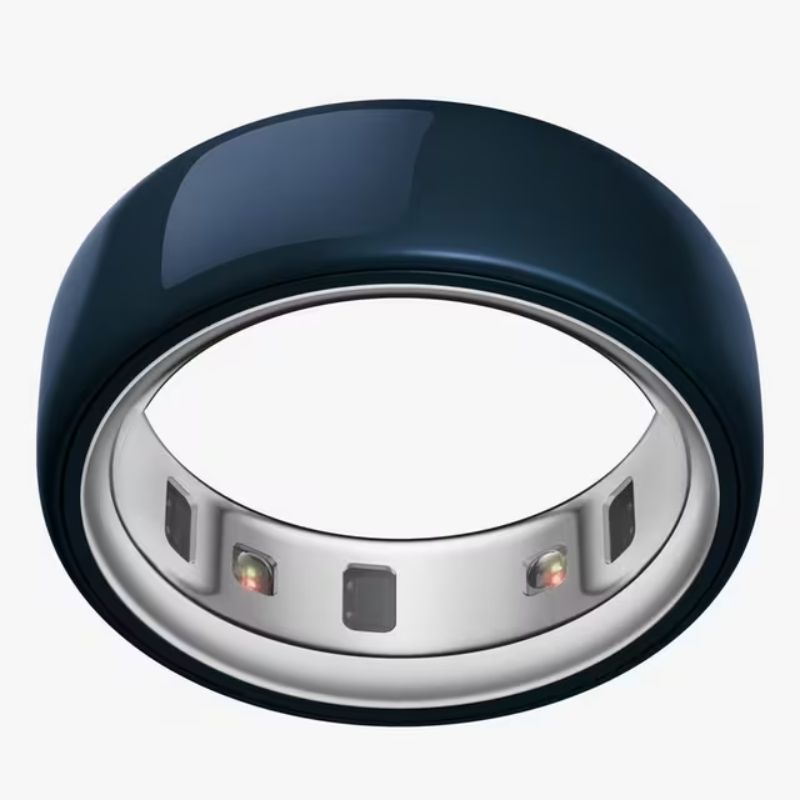
In October, Oura announced an exciting change to the Oura Ring 4. It would now be available in a new ceramic material that was more robust and scuff-free, and in several new (non-metallic) colourways. I love the Petal pink colour as a pop of colour or the dark blue for something a little more wintery.
It's available to buy directly from the Oura website or via John Lewis in sizes 4 to 15.
Sleep tracking on the Oura Ring 4
Unlike other health and fitness trackers, the Oura Ring 4 was engineered to prioritise sleep insights over anything else. So, you best believe it's accurate and detailed.
Using your body temperature and activity patterns, the ring detects how your body temperature falls (signalling you're falling asleep) and when it rises (when you wake up). Once the ring has worked out you're asleep, it starts collecting data on your vitals (including heart rate, respiration, and body temperature)
On waking up, I had a complete overview of my night, outlined in various metrics. Alongside the regular insights into sleep stages (light, deep, REM, and awake times), I can see:
Sign up to our free daily email for the latest royal and entertainment news, interesting opinion, expert advice on styling and beauty trends, and no-nonsense guides to the health and wellness questions you want answered.
- Time spent in bed vs asleep: I found this useful to improve my sleep hygiene as I learnt I spend about an hour in bed scrolling on my phone or lying awake before falling asleep.
- Sleep efficiency score: The percentage of time spent asleep compared to time spent awake in bed.
- Restfulness score: This tracks your wake-ups, excessive movement, and any tossing and turning that could affect your sleep quality.
- Latency: This is the amount of time it takes for you to fall asleep after lying down. According to Oura, you should be asleep within 15 to 20 minutes of lying down. However, as I found, it can be skewed if you lie down - then look at your phone.
- Timing: This depends on the time you fall asleep and the time you wake up. Ideally, you want your sleep midpoint to be between midnight and 3 AM, Oura says. Sleeping too much outside of these times can negatively impact your circadian rhythm.
- Heart rate data: Two separate tabs detail your lowest heart rate and the time you reached it, and your average heart rate variability throughout the night. The higher your score, the greater your cardiovascular fitness and stress resilience. It's also a sign of a lower biological age. However, the number differs for everyone.
With this data in my back pocket, I've learned how to sleep better. I've started going to bed earlier, keeping my phone away from my bedside table to not be tempted, cut down on my alcohol intake and late-night workouts to try and improve my sleep hygiene. I'm excited to see if this makes a difference in the coming months.
What I love most about sleep tracking on the Oura Ring 4 is that you can track trends in your data. For example, I can tag my habits (e.g. when I've drunk alcohol, had caffeine late at night, or exercised late) to see if it's had an impact on my sleep quality over time. Tap into any of the metrics and you'll get a graph showing how your score that night compares to the rest of the week or month, which I found useful to work out whether I needed to change my sleep routine.
I also saw my heart rate variability increase over time, a reassuring sign that I was getting fitter ahead of a marathon I was doing.
After wearing my Oura Ring 4 for a couple of weeks, I received even more data in a review of my sleep chronotype. This revealed my ideal bedtime, wake up time, and my ideal time for exercise. I don't always stick to this, but I certainly feel better when I do.
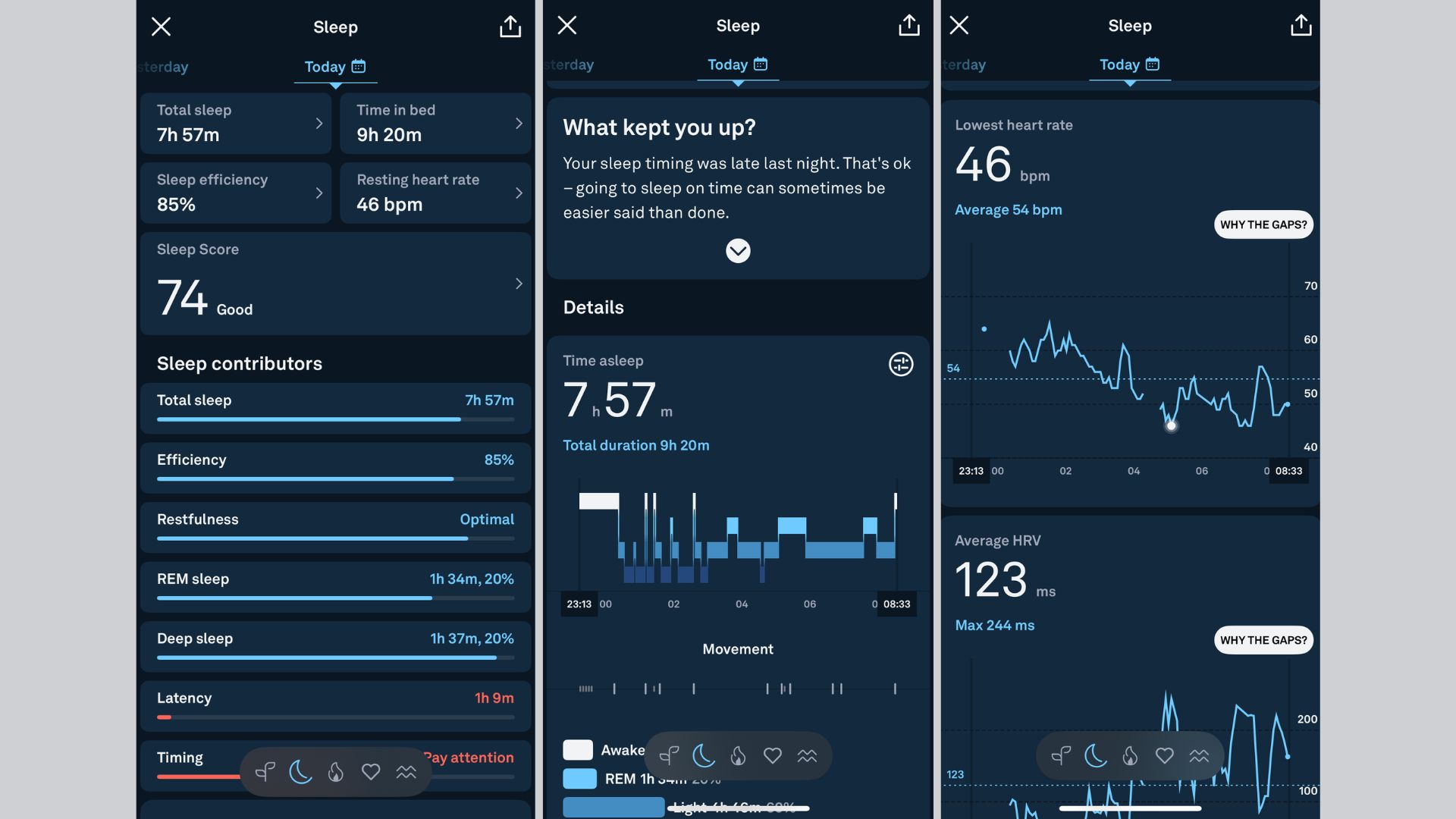
The sleep data on the Oura Ring 4 is the most detailed I've seen.
Stress monitoring
We all know what it feels like to be stressed, the Oura Ring 4 doesn't need (or want) to tell you when you're under pressure. What it does do, however, is take signs of stress and relaxation (resting heart rate, HRV balance, body temperature, recovery index, sleep, sleep balance, previous day's activity, and activity balance) into account to give you a Readiness Score.
I use this score to work out whether I can increase my exercise efforts or need to dial them back. Often, it's the combination of my work, social, and fitness habits that causes me to feel tired, and the Oura Ring 4 is so useful to help pick up which one of the three is causing me problems at any given time. In terms of finding balance, it's been a game-changer.
What's more, much like sleep tracking, the Readiness Score looks at my data over time, whether that's a week or a month, so I can edit my lifestyle longer-term if needed.
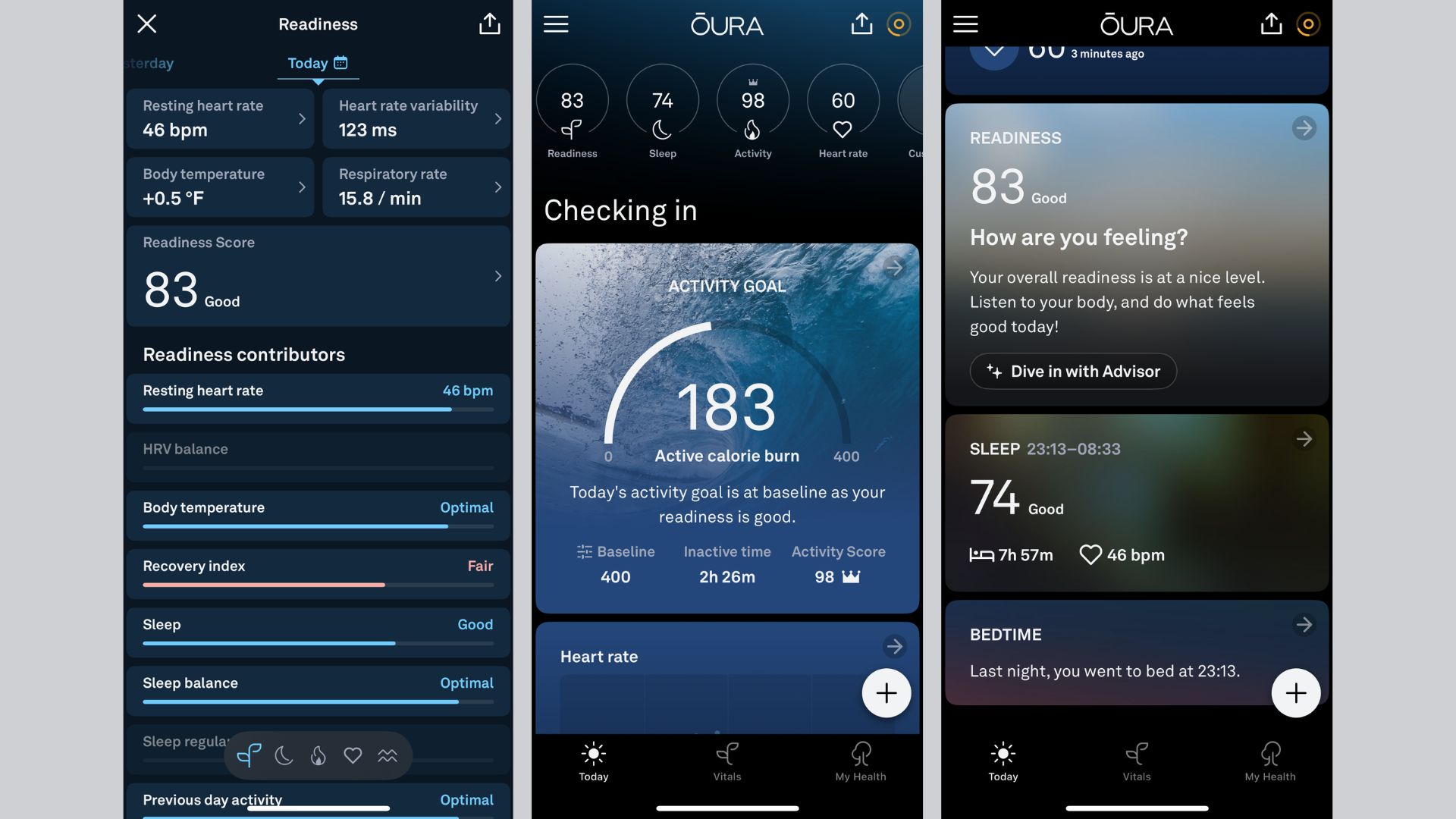
The Oura Ring 4 uses various metrics, including activity and sleep, to create a Readiness Score that works as an overview of how your body is doing every day.
Activity tracking on the Oura Ring 4
The Oura Ring 4 automatically tracks and logs three pre-selected workouts (I chose walking, running, and cycling as I do these most, but there are 40 to choose from on sign-up), delivering data in the app as soon as the ring recognises that you've stopped the activity.
In the data, you'll see the session duration, distance covered, steps (if relevant), active calorie burn, average pace, and average heart rate. You'll get a breakdown of your heart rate zones and how that tracks with your other workouts that week, and if enabled, you'll see a GPS map overview of your route.
It feels super intuitive, and I've found it genuinely interesting to see how many small bursts of exercise I do throughout the day alongside my regular workouts, and how these impact my cardiovascular and metabolic health.
The only thing to note is that the step count is slightly exaggerated. Early on in testing, I noticed that the ring recorded almost 1000 extra steps every day, compared to the watch I used as a baseline. This isn't the case anymore - it's more like 200 or 300 extra steps, but still more than the Apple Health app on my phone or my Coros Pace 3 was picking up.

The Oura Ring 4 offers a plethora of basic workout tracking insights, including what zones you were working in and the impact this has on your health.
But while I'll sing the praises of the Oura Ring 4 to whoever will listen, I do want to emphasise that you'll get more detailed insights into your workouts from other devices. If you're a runner, for example, it's worth weighing up Oura Ring vs Garmin as the Garmin Forerunner 265 will deliver advanced insights into your running form (such as vertical oscillation, cadence, and stride length) with finish time predictions for various distances.
I plan to keep my running watch on my wrist and complement the data I get from this with my Oura Ring 4. If you don't have dedicated fitness goals beyond improving your health (you're not signed up for a marathon, for example), then you'll likely find the Oura Ring ideal for monitoring your fitness.
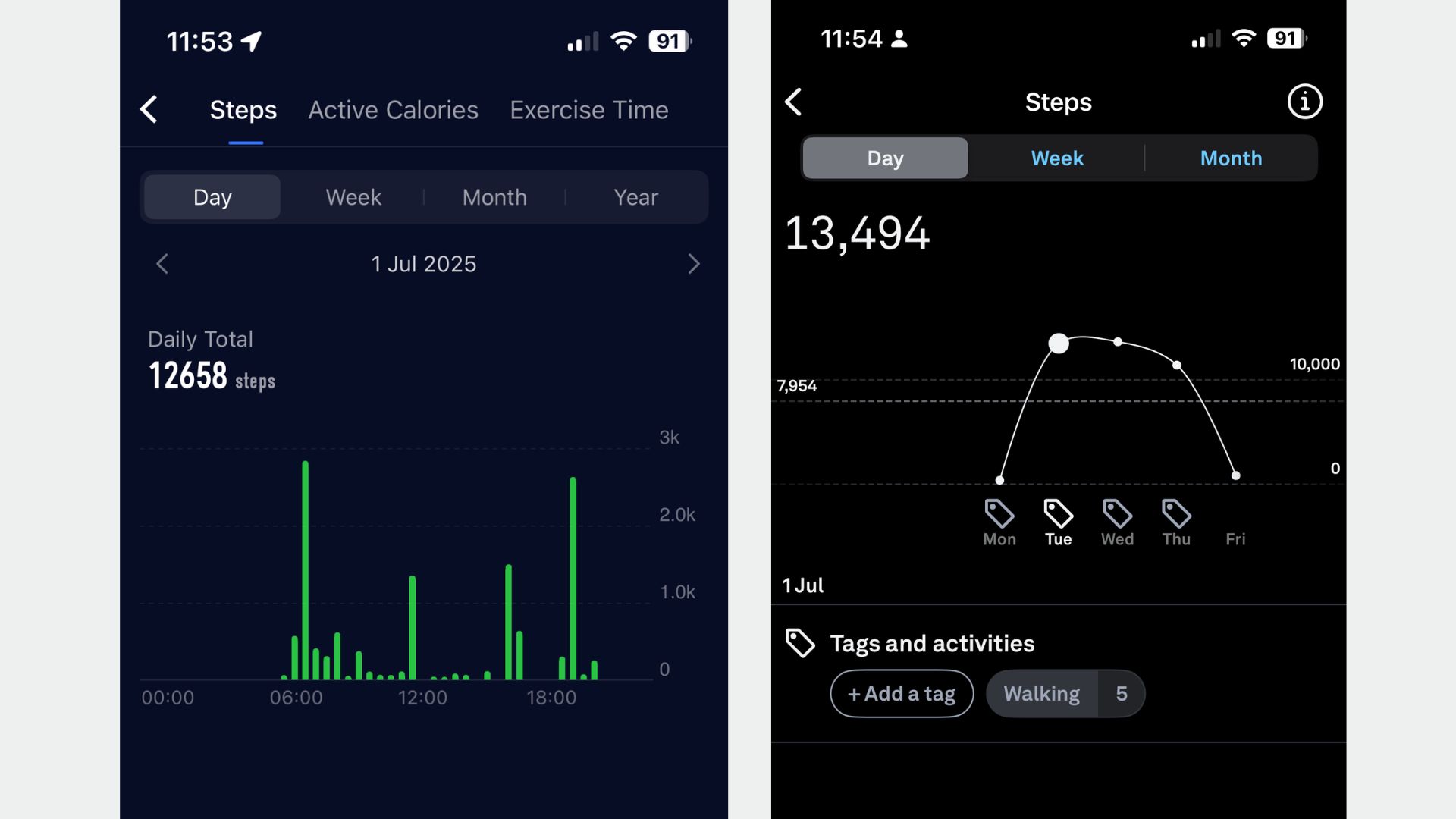
The Oura Ring 4 (right) recorded almost 1000 more steps than the Coros Pace 3 (left).
Design
The Oura Ring 4 comes in six colours and two designs - metallic and ceramic. The metallic finish is bright when new, and regardless of the size you buy, it'll measure just under 8mm. For me, this is about triple the width of my wedding ring.
The ceramic model is slightly larger, which is noticeable at first if you've had the metallic design, but you quickly get used to it. It comes in four colourways: white, light blue, light pink, and dark blue, so there's a style for everyone. I have the petal pink and it's a delightful pop of colour in my otherwise neutral wardrobe.
Overall, the ceramic model may be preferrable if you do a lot of exercise or find yourself bumping your hands a lot around during the day. The metallic model may look more discreet and chic but it gets scratched relatively easily on the underside.
And whatever you do, if you do opt for the metallic design, keep it out of the gym and away from the textured side of dumbbells - mine hasn't looked the same since.
The sensors (which include green and red LEDs for heart rate, heart rate variability, and sleep respiration; red and infrared LEDs for blood oxygen tracking; a digital temperature sensor; and an accelerometer) sit on the inside of the ring, facing the skin for accurate readings. This is new and improved from the previous model.
Perhaps unsurprisingly, the charging method is also well thought out. It's a small platform with a space for the ring that can be charged via USB-C, so you can have wireless charging whenever you need it.
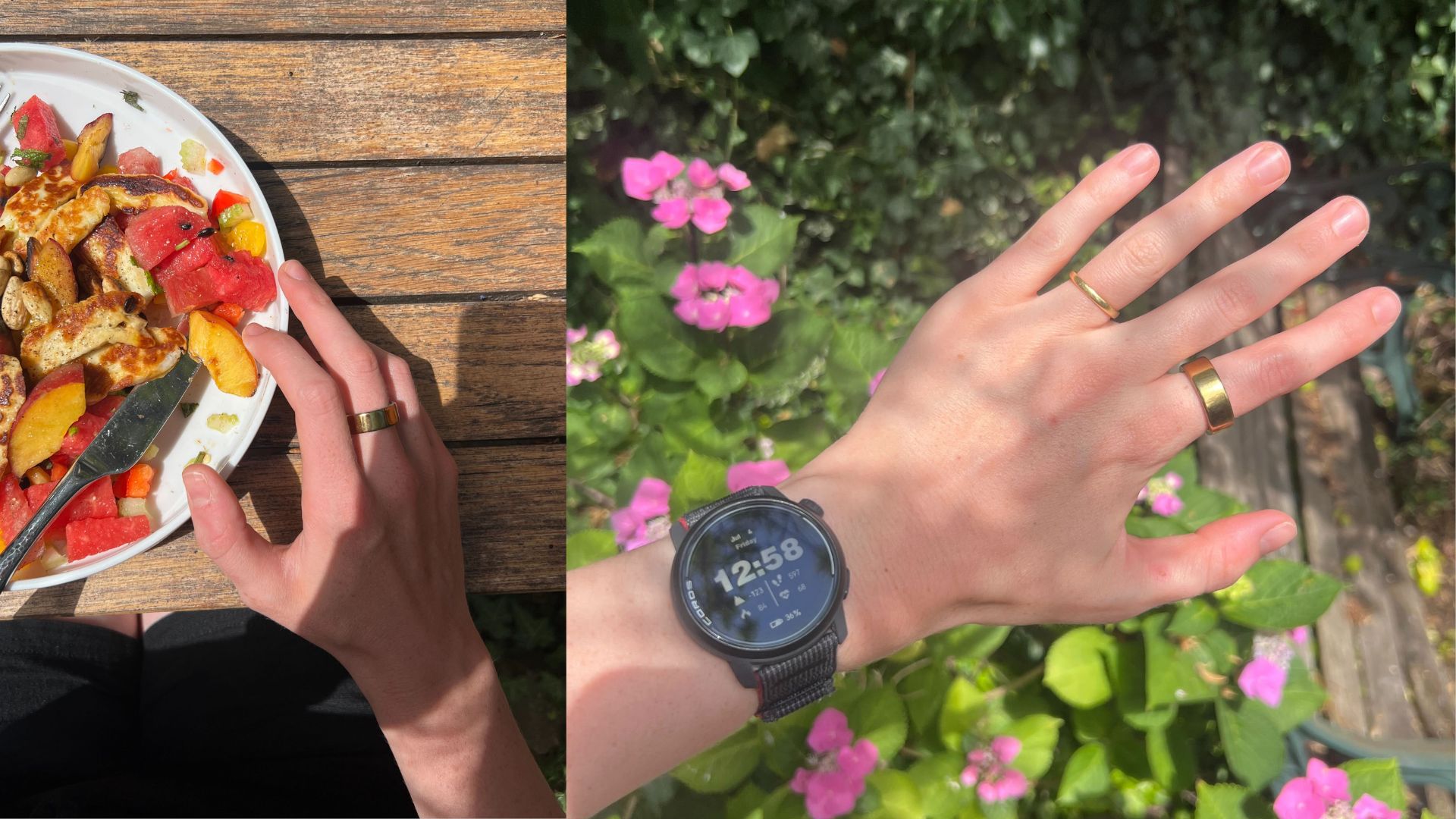
The Oura Ring 4 may look chic and discreet in metal but it scratches relatively easily.
What is the Oura Ring 4 like to wear?
The Oura Ring 4 feels incredibly lightweight on my finger, so apart from when I'm moisturising my face and body, I wear the device 24/7, and I forget I'm wearing it most of the time. The fact that it blends in seamlessly with my other gold rings and watches makes this easier.
The ring is chunky, regardless of the size you buy, but still significantly more discreet than any fitness tracker I've tried - including the Huawei GT Pro 5, which looks like a regular timepiece. The untrained eye wouldn't be able to tell it was anything more than a regular ring, making it suitable for all of life's occasions.
As you move your hands, the ring will naturally twist around. This was a problem with the Oura Ring Gen 3 as the sensors only worked properly when they sat on the palm side of your finger. In the new model, it's not a problem thanks to the upgraded sensors, which benefit from the ring's improved design in the newer model.
Is Oura Ring 4 worth it?
I was really excited to see the new design and features in the Oura Ring 4 and because of these, I'd say the ring is certainly worth investing in if you want to improve your health from the core pillars (sleep, activity, and body stress) rather than just focusing on exercise.
The app is very easy to use, and the ring is a delight to wear, inconspicuous yet stylish.
You're not going to get deep insights into your running, cycling, swimming, or other exercise metrics like you would on the Coros Pace 3 or some of the best Garmin watches, for example, but you will get the basics. For many people, that will be more than enough.
Aside from the early step count inaccuracies, the only disadvantage of owning the Oura Ring 4 (as opposed to other smart rings, like the Samsung Galaxy Smart Ring) is the subscription fee. You have to pay £5.99 per month, otherwise you only have access to very basic health data. This basic health data, to be honest, you could find elsewhere for much cheaper, so it's worth weighing up the Oura Ring vs Fitbit Charge 6, one of the best Fitbits with similar fitness data offerings, before making a decision.
You also need to use a sizing kit to find the right size (free) before buying your ring, so purchasing isn't a quick process.
If you don't mind the subscription fee and are happy to invest, I'd say the pinnacle of smart ring technology is in the Oura Ring 4 right now. It doesn't get better than this when it comes to accurate and genuinely insightful sleep and health metrics.
How I tested the Oura Ring 4
For almost five months, I've worn the ring every day. That includes overnight, during workouts, my daily commute and office day, and in the shower, which has allowed the device to pick up my rhythms 24/7. This, I found, improved the accuracy of it over the weeks.
I also did a variety of workouts and activities with the Oura Ring to get a complete grasp of how it fared in different environments. For example, I wore the ring on holiday in Spain to see if warmer temperatures impacted my sleep (they did) and during a busy week at work to see whether heightened stress had an impact on my wellbeing (it did). I've done strength training, running, walking, and Pilates with my ring on, but it can over 40 different types of activities.
I tested the Oura Ring 4 against my other fitness trackers, including some of the best Garmin watches, which I've had on my wrist for over six months, to make sure the data was consistent. As the watch has had more time to get familiar with my body, it has worked as a great baseline for accuracy.
Metallic vs Ceramic on the Oura Ring 4
- Durability: The first thing I noticed about the metallic vs ceramic Oura Ring 4 was the durability. After almost five months of wearing the ring, the gold metal has scratched and tarnished on the underside of my ring. As I wear it all day, every day, this isn't surprising (and it's only noticeable when you look up close), but it's not ideal. The ceramic doesn't have the same problem - when it comes into contact with rough surfaces, I can only see light abrasions, and these can be buffed away with a cloth.
- Size: The ceramic Oura Ring is fractionally larger than the original metallic design, thanks to the high-performance zirconia ceramic coating. Day to day, I haven't noticed much of a difference, though, and it shouldn't put you off choosing the metallic over the ceramic if you prefer the design and colours.
- Colours: For many people, the colours of the ceramic vs metallic Oura Ring 4 will be the deciding factor. If you prefer your jewellery in classic metals and you like the ring because it looks like a regular piece of jewellery, then I'd suggest going for the metallic. However, the colours of the ceramic model are much more exciting, with blue, pink, and white options.
- Charging: The charging of the Oura Ring 4 is the same, regardless of the design you choose, with a new metal platform included with the ceramic ring.
Oura Ring 4 vs 3
- Price: Thanks to the release of the Oura Ring Generation 4, the Oura Ring Generation 3 is now much cheaper, especially during peak shopping times like Amazon Prime Day. I've found the ring in silver for less than £200.
- Size and weight: There's not a lot in it. The newer model is lighter and fractionally smaller, but side by side, it's barely noticeable. Weight is a consideration if you plan on wearing the ring 24/7, though, as this can add up over time.
- Colour range: The Oura Ring 4 comes in six colours, including brushed silver and rose gold, whereas the previous model only comes in four colours.
- Battery life: Both the Oura Ring 4 and 3 use a charging dock to fuel the battery. The newer model lasts eight days between charges, and the older one lasts seven.
- Accuracy: Thanks to the new Smart Sensing technology, the Oura Ring 4 is more accurate than the 3. You don't always have to have the ring perfectly positioned to get the data insights, making it a more versatile design.
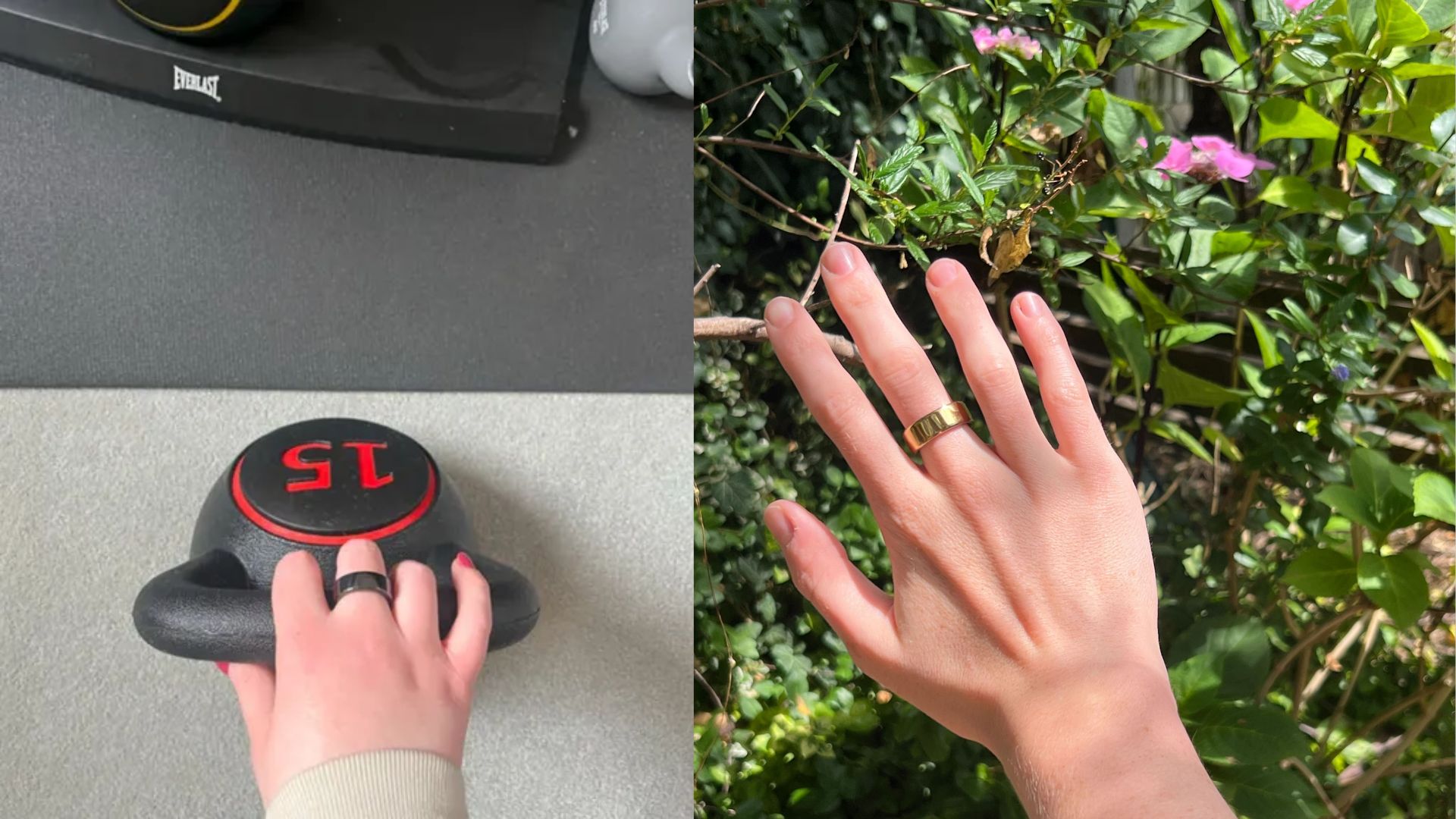
The Oura Ring Generation 3 (left, as tested by Ciara McGinley) and the Oura Ring Generation 4 (as tested by me) look very similar in design.
FAQs
Does Oura Ring 4 need a subscription?
Yes, after a one-month free trial, you have to pay £5.99 a month to continue using the Oura Ring 4. Without the subscription, you only get access to basic insights.
If the subscription fee is a sticking point for you, I'd recommend trying one of the other smart rings, such as the Samsung Galaxy Smart Ring (similar RRP but without a subscription) or the Ultrahuman Ring.
Can I wear an Oura Ring 4 on any finger?
Oura suggests wearing the ring on your index finger for the most accurate results. However, you can technically wear it on any finger you like.
I switched to wearing the ring on my middle finger about three days into my testing, as this was more comfortable for me, and I found it got in the way less throughout daily life. It wasn't any less accurate than when I wore it on my index finger.
Can you shower with Oura Ring?
Yes, you can shower, wash, or go swimming with the Oura Ring 4 on your finger, but it's only water resistant up to 100 metres so take it off if you're planning on deep sea diving.
I wore my ring showering and when washing my hands, not only so I wouldn't take it off and lose it, but to give it a clean.

Grace Walsh is woman&home's Health Channel Editor, working across the areas of fitness, nutrition, sleep, mental health, relationships, and sex. She is also a qualified fitness instructor. In 2025, she will be taking on her third marathon in Brighton, completing her first ultra marathon, and qualifying as a certified personal trainer and nutrition coach.
A digital journalist with over seven years experience as a writer and editor for UK publications, Grace has covered (almost) everything in the world of health and wellbeing with bylines in Cosmopolitan, Red, The i Paper, GoodtoKnow, and more.
You must confirm your public display name before commenting
Please logout and then login again, you will then be prompted to enter your display name.
